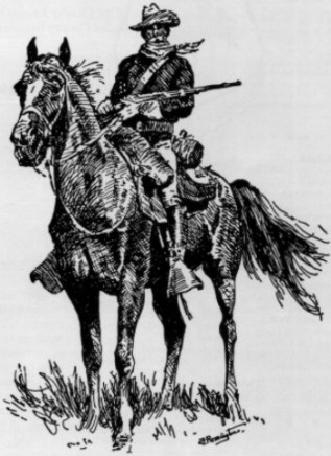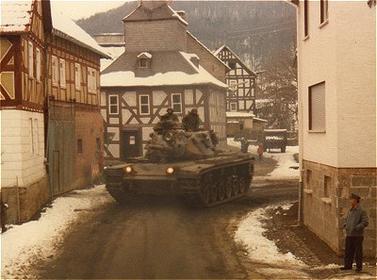The purge of the Red Army was claimed to be supported by Nazi-forged documents (said to have been correspondence between Marshal
Tukhachevsky and members of the German high command).
The claim is, however, unsupported by facts, since by the time the documents were supposedly created, two people from the eight
in the Tukhachevsky group were already imprisoned, and by the time the document was said to reach Stalin, the purging process was
already underway. However the actual evidence introduced at trial was obtained from forced confessions. The purge of the army removed
three of five marshals (then equivalent to six-star generals), 13 of 15 army commanders (then equivalent to four- and five-star
generals), eight of nine admirals (the purge fell heavily on the Navy, who were suspected of exploiting their opportunities for
foreign contacts), 50 of 57 army corps commanders, 154 out of 186 division commanders, 16 of 16 army commissars, and 25 of 28 army
corps commissars. All told, 30,000 members of the armed forces were executed.
The chaos caused by the purge of the Soviet Army aided in their early defeat at the onset of the Nazi invasion of 1941. It has also
been observed that the aforementioned chaos may actually have encouraged Adolf Hitler and Nazi Germany to launch Operation Barbarossa,
after they learned of the weakness of the Red Army.
Eventually almost all of the Bolsheviks who had played prominent roles during the Russian Revolution of 1917, or in Lenin’s Soviet
government afterwards, were executed. Out of six members of the original Politburo during the 1917 October Revolution who lived until
the Great Purge, Stalin himself was the only one who survived. Four of the other five were executed. The fifth, Leon Trotsky, went
into exile in Mexico after being expelled from the Party but was assassinated by a Soviet agent in 1940. Of the seven members elected
to the Politburo between the October Revolution and Lenin’s death in 1924, four were executed, one (Tomsky) committed suicide and two
(Molotov and Kalinin) lived. Of 1,966 delegates to the 17th Communist Party congress in 1934 (the last congress before the trials),
1,108 were arrested and nearly all died.
The trials and executions of the former Bolshevik leaders were, however, only a minor part of the purges:
A series of national operations of the NKVD was carried out during 1937–1940, justified by the fear of the fifth column in the
expectation of war with “the most probable adversary”, i.e. Germany, as well as according to the notion of the “hostile capitalist
surrounding”, which wants to destabilize the country. The Polish operation of the NKVD was the first of this kind, setting an example
of dealing with other targeted minorities. Many such operations were conducted on a quota system. NKVD local officials were mandated
to arrest and execute a specific number of “counter-revolutionaries”, produced by upper officials based on various statistics
By the summer of 1938, Stalin and his circle realized that the purges had gone too far, and Yezhov was relieved from his head of NKVD
post (remaining People’s Commisariat of Internal Affairs) and eventually purged. Lavrenty Beria, a fellow Georgian and Stalin confidant,
succeeded him as head of the NKVD. On November 17, 1938 a joint decree of Sovnarkom USSR and Central Committee of VKP(b) (Decree about
Arrests, Prosecutor Supervision and Course of Investigation) and the subsequent order of NKVD undersigned by Beria cancelled most of
the NKVD orders of systematic repression and suspended implementation of death sentences. The decree signaled the end of massive Soviet
purges. Nevertheless, the practice of mass arrest and exile was continued until Stalin’s death in 1953. Political executions also
continued, but, with the exception of Katyn and other NKVD massacres during WWII, on a vastly smaller scale. One notorious example is
the “Night of the Murdered Poets,” in which at least thirteen prominent Yiddish writers were executed on August 12, 1952.
Western Reaction
Although the trials of former Soviet leaders were widely publicized, the hundreds of thousands of other arrests and executions
were not. These became known in the west only as a few former gulag inmates reached the West with their stories. Not only did foreign
correspondents from the West fail to report on the purges, but in many Western nations, especially France, attempts were made to
silence or discredit these witnesses; Jean-Paul Sartre took the position that evidence of the camps should be ignored, in order that
the French proletariat not be discouraged. A series of legal actions ensued at which definitive evidence was presented which
established the validity of the former concentration camp inmates’ testimony.
Robert Conquest wrote the book The Great Terror in 1968. According to Conquest, writing in The Great Terror, with respect to the
trials of former leaders, some Western observers were unable to see through the fraudulent nature of the charges and evidence, notably
Walter Duranty of The New York Times, a Russian speaker; the American Ambassador, Joseph Davis, who reported, “proof…beyond
reasonable doubt to justify the verdict of treason” and Beatrice and Sidney Webb, authors of Soviet Communism: A New Civilization.
According to Conquest, writing in The Great Terror, while “Communist Parties everywhere simply transmitted the Soviet line”, some of
the most critical reporting also came from the left, notably The Manchester Guardian.
Despite great skepticism regarding the show trials and occasional reports of Gulag survivors, many western intellectuals retained a
favorable view of the Soviet Union. Some of them dissociated themselves from the Communist party, but not from Communist convictions,
only in 1956, when the Stalinist crimes were made public within the inner communist circles in Russia. With the beginning of the Cold
War and McCarthyism, some supporters of the USSR were persecuted, so there were personal motives for a number of intellectuals to
change their mind. Also, evidence and the results of research began to appear after Stalin’s death which revealed the full enormity of
the Purges. The first of these sources were the revelations of Nikita Khrushchev, which particularly affected the American editors of
the Communist Party USA newspaper, the Daily Worker, who, following the lead of The New York Times, published the Secret Speech in
full. In 1968, Robert Conquest published The Great Terror: Stalin’s Purge of the Thirties. Aleksandr Solzhenitsyn’s The Gulag
Archipelago followed in 1973. By the Glasnost era of the late 1980s, Stalin was denounced openly by Mikhail Gorbachev as a criminal,
and Soviet records were opened to Western and Soviet researchers after the collapse of the Soviet Union. Finally, in France, where the
intellectual climate was most sympathetic to Soviet communism, The Black Book of Communism (1997), relying in part on revelations of
the Great Purge, compared communism unfavorably to Nazism. Nevertheless, minimization of the extent of the Great Purge continues among
revisionist scholars in the United States (see, e.g., pp. 15-17, In Denial, ISBN 1-893554-72-4) and small but passionate groups of
modern-day Stalinists.
According to the declassified Soviet archives, during 1937 and 1938, the NKVD detained 1,548,367 victims, of whom 681,692 were shot -
an average of 1,000 executions a day. Historian Michael Ellman claims the best estimate of deaths brought about by Soviet
Repression during these two years is the range 950,000 to 1.2 million - i.e. about a million – which includes deaths in detention and
those who died shortly after being released from the Gulag as a result of their treatment in it. He also states that this is the
estimate which should be used by historians and teachers of Russian history. According to Memorial society
On the cases investigated by the State Security Department of NKVD (GUGB NKVD):
At least 1,710,000 people were arrested
At least 1,440,000 people were sentenced
At least 724,000 were executed. Among them:
At least 436,000 people were sentenced to death by NKVD troikas as part of the Kulak operation
At least 247,000 people were sentenced to death by NKVD Dvoikas’ and the Local Special Troykas as part of the Ethnic Operation
At least 41,000 people were sentenced to death by Military Courts
Among other cases in October 1936-November 1938:
At least 400,000 were sentenced to labor camps by Police Troikas as Socially Harmful Elements (социально-вредный элемент, СВЭ)
At least 200,000 were exiled or deported by Administrative procedures
At least 2 million were sentenced by courts for common crimes, among them 800,000 were sentenced to Gulag camps.
Some experts believe the evidence released from the Soviet archives is understated, incomplete or unreliable. For example, Robert
Conquest suggests that the probable figure for executions during the years of the Great Purge is not 681,692, but some two and a half
times as high. He believes that the KGB was covering its tracks by falsifying the dates and causes of death of rehabilitated victims,
although this is speculation as no evidence of this cover-up has come to light.
Maybe the Russian Government shouldn’t have let us westerners in to reveal there own classified archives…
Both the Nazis and the Communists kept power at the expense of their peoples.
Unfortuneately it took the German People 12 years to get rid of Hitler and the Russians took 74 years to get rid of theirs and both are better for it.
Cavalry Gunner
Wally






